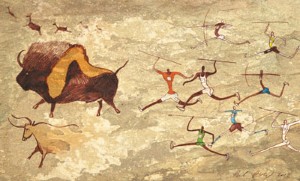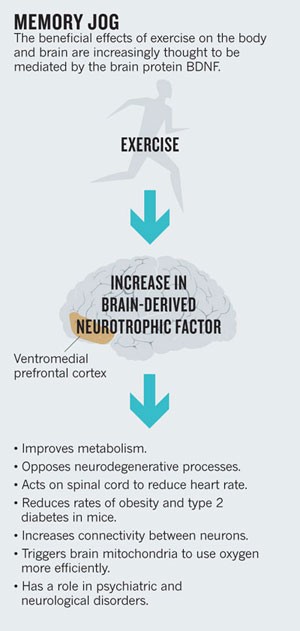Especialista en el Sarcoma de Ewing. Médico patólogo y jefe de servicio de Anatomía Patológica del Virgen del Rocío, Enrique de Álava (Pamplona 1964) es investigador responsable en el Instituto de Biomedicina de Sevilla (IBIS), especializado en el Sarcoma de Ewing (el que sufría Elena Huelva),
coordinador del Plan de medicina personalizada y de precisión en la
Consejería de Salud y coordinador del programa de Diagnósticos y
Terapias de Precisión en el área de Cáncer del Centro de Investigación Biomédica en Red CIBER. Compatibiliza el diagnóstico en este hospital universitario con la investigación, la docencia en la Facultad de Medicina de la Universidad de Sevilla y
la gestión hospitalaria. Médico como su padre, procede de una familia
navarra con raíces vascas, valencianas, madrileñas, pero se considera
navarro. Lleva 20 años fuera de su tierra y 10 viviendo en Sevilla.
Casado y con dos hijos de 23 y 19, se organiza bien y le gusta trabajar
en equipo. Se levanta a las 6:00, media hora de meditación para repasar
el día anterior y dar gracias por la vida, y va al trabajo en Sevici.
Le gusta la música, leer, filosofar, la bici, la fotografía y tomar
tapitas. Muy curioso e inquieto, forma parte de la directiva de la
asociación Sevilla Quiere Metro y está ligado con su comunidad cristiana a la acogida de inmigrantes en Casa Mambré.
-Pocas personas saben que la labor de los patólogos es fundamental en un hospital...
-Somos médicos invisibles y, sin embargo, tenemos un
papel fundamental porque ponemos nombres y apellidos a las enfermedades.
El tratamiento que el médico da al paciente depende muchas veces de
nuestro diagnóstico. Somos clave en la toma de decisiones clínicas. De
hecho, no se pone una quimioterapia o una radioterapia sin que lo diga
un patólogo. El cáncer no es una enfermedad, sino cientos de
enfermedades diferentes. Los patólogos estudiamos biopsias (del griego
'mirar la vida') o citologías que nos llegan. Usamos el microscopio y
analizamos los genes para poder poner nombres y apellidos a las
enfermedades.
-¿Podremos acabar algún día con el cáncer gracias al avance de la ciencia?
-Yo pondría otro símil: ¿hemos acabado con el Sida? No,
porque sigue habiendo virus, pero hemos conseguido que se convierta en
una especie de enfermedad crónica, la podemos tratar y muy poca gente se
muere de Sida en el primer mundo. Con el cáncer el problema es que hay
tantos tipos de cáncer que necesitas investigación para cada uno de
ellos. Por eso es infinitamente más complicado, porque cada cáncer tiene
su origen. En algunos cánceres se ha avanzado en el tratamiento y han
mejorado muchísimo. Por ejemplo, el cáncer infantil: hace 60 años era
mortal y ahora la mayor parte evolucionan bien; la excepción son un
pequeño grupo de pacientes con cáncer que no responde, como es el
Sarcoma de Ewing y muchos más, y es ahí donde hay que insistir. Así
pues, el cáncer se cura con prevención, con un buen diagnóstico, con
buen tratamiento y también con investigación. Hay que dar mucho más
dinero a la investigación.
-Hay expertos que vaticinan que acabaremos con el cáncer y las enfermedades neurológicas
-La recuperación de enfermedades neurológicas está
todavía más lejos que la solución al cáncer. Mi sueño es que el cáncer
se convierta en una enfermedad crónica.
La prevención es la clave. Si dejásemos de fumar, la
tercera parte de las muertes por cáncer desaparecerían. El cáncer es una
pandemia. También lo son los altos niveles de grasas en sangre, el
azúcar y los hidratos de carbono. Hay que seguir avanzando en la
investigación, pero también hay que prevenir.
-¿El cáncer se hereda en los genes?
-A la gente le preocupa que el cáncer sea hereditario,
pero hay que decir que solo un 15% del cáncer es hereditario. El resto
de los cánceres tiene que ver con los genes de las células, pero esos
“genes malos” no se heredan. Digamos que las mutaciones tienen lugar en
esas células tumorales en ese momento concreto y esas células cambian y
se hacen malas. Lo que hace que esas células se malignicen son
fundamentalmente los hábitos de vida.
La buena noticia es que buena parte del cáncer es prevenible si nos tomamos en serio las 12 claves que recomienda el Código Europeo contra el Cáncer.
-¿Qué lugar ocupa Andalucía en la investigación sobre cáncer?
-En investigación biomédica, a lo que me dedico,
Andalucía ha dado pasos importantes. Tiene buenos institutos de
investigación cerca de los hospitales, como el IBIS de Sevilla,
el segundo instituto que se creó en España; un centro de investigación
puntero donde se investiga sobre cáncer y muchas otras cuestiones, y muy
bien integrado con los hospitales Virgen del Rocío y Macarena. Hay
otros excelentes centros de investigación no ligados a hospitales como
el CABIMER en Sevilla y el GENYO
en Granada. En suma, en Andalucía hay buenos institutos de
investigación y se hace investigación en los hospitales. Además, la
Consejería de Salud siempre ha tenido programas para fomentar la
investigación en los centros sanitarios.
Quizás lo más destacable en Andalucía es que va a crear la figura de los clínicos investigadores con plaza en propiedad,
que pueden realizar diagnóstico e investigación, y eso ha sido un logro
de esta Consejería. Tener un contrato fijo de funcionario que te
permita hacer investigación y asistencia prácticamente no existe en
España.
-Aparte de la medicina, está implicado en el impulso ciudadano del Metro desde la asociación Sevilla Quiere Metro
-Quiero dejar el mundo mejor de como me lo he encontrado y
aportar cambios, siempre de manera constructiva. Formar parte de la
directiva de la asociación Sevilla Quiere Metro es de las mejores
decisiones en estos dos años. Es necesario un transporte eficiente como
el Metro, que vertebra socialmente los barrios de Sevilla y permite que
la gente pueda elegir dónde vivir. El Metro también puede mejorar la
calidad del aire: 400.000 personas mueren al año en Europa por
enfermedades asociadas a la mala calidad del aire por el uso de
combustibles fósiles. El tráfico motorizado es uno de los causantes.
-Sevilla necesita con urgencia completar su red de Metro
-Todas las administraciones están haciendo su trabajo,
pero hay que pedirles que aceleren los trámites porque llevamos un
retraso de 30 años. ¿De qué hablamos? Del tramo Sur de la línea 3, cuyo
proyecto está en fase final de revisión y hay que ponerlo en información
pública para que la gente lo conozca. El proyecto de la línea 2 quedó desfasado y hay que actualizarlo en 2023
para captar fondos europeos y empezar las obras en 2028. Hay dinero en
los presupuestos de Andalucía de este año para actualizarlo.
-Su preocupación por la pobreza y la inmigración le llevó a abrir Casa Mambré en Sevilla
-Decidimos abrir con mi comunidad cristiana Casa Mambré,
un grupo de hospitalidad que acoge inmigrantes, sobre todo
subsaharianos. Caritas colabora con nosotros recomendándonos los
perfiles que podemos acoger. En los últimos siete años, 40 personas que
han pasado por Casa Mambré han logrado inserción laboral tras completar
sus estudios de la ESO o FP. Tenemos cuenta en twitter, facebook e
instagram y admitimos donaciones para apoyar el proyecto.



